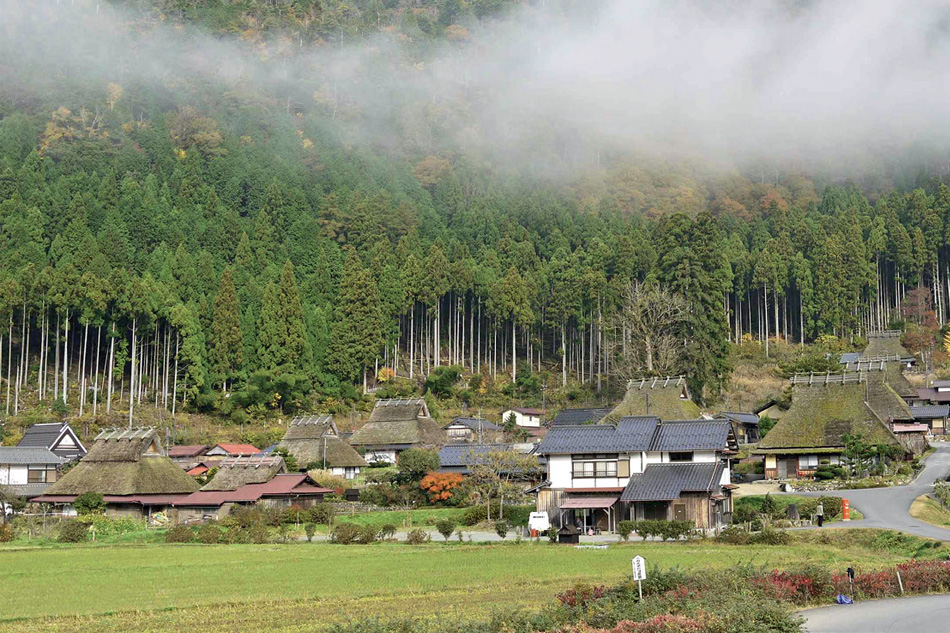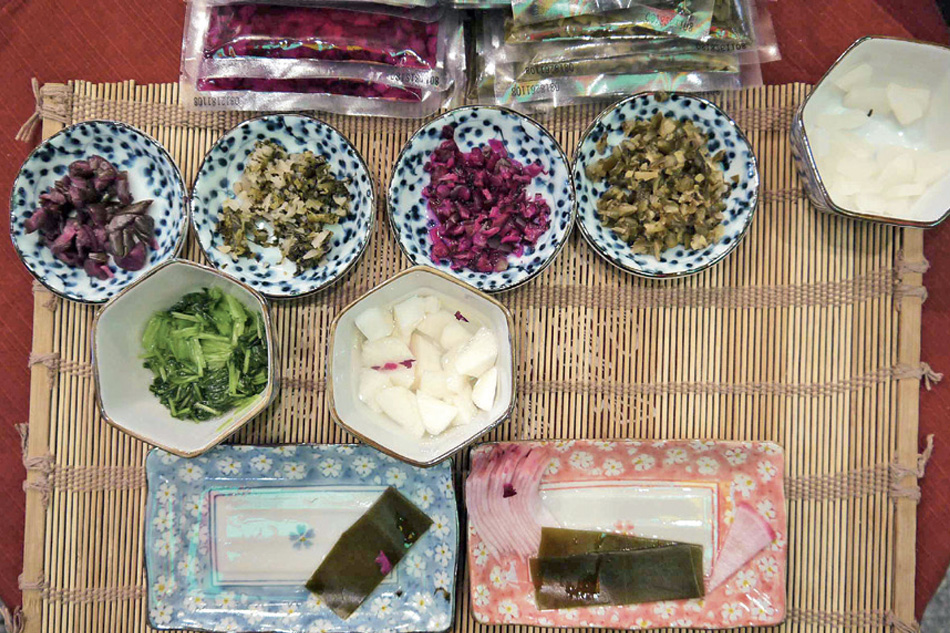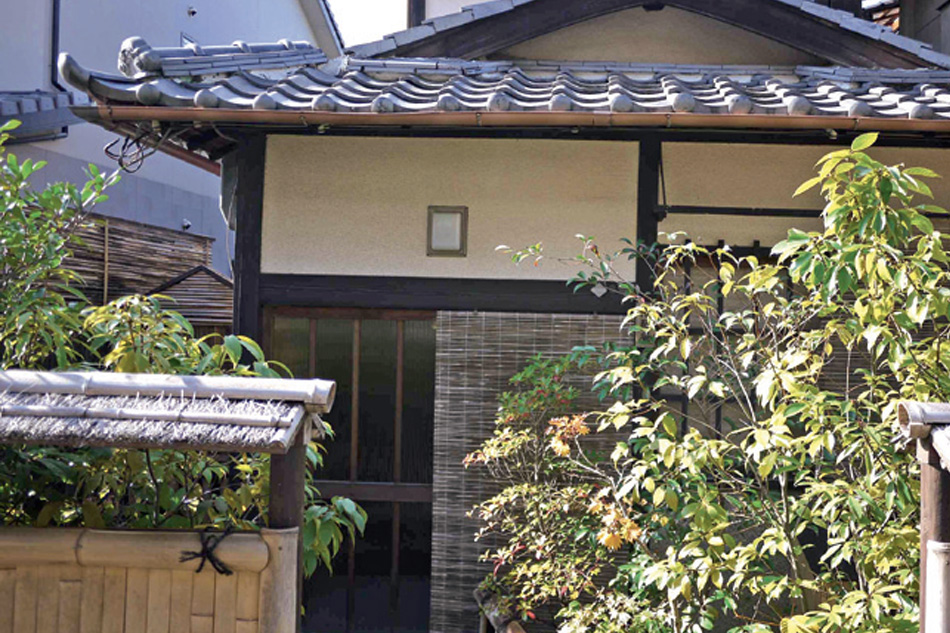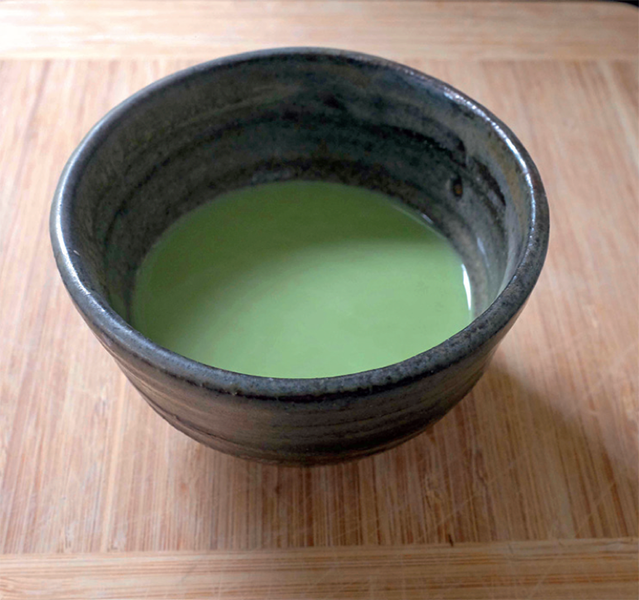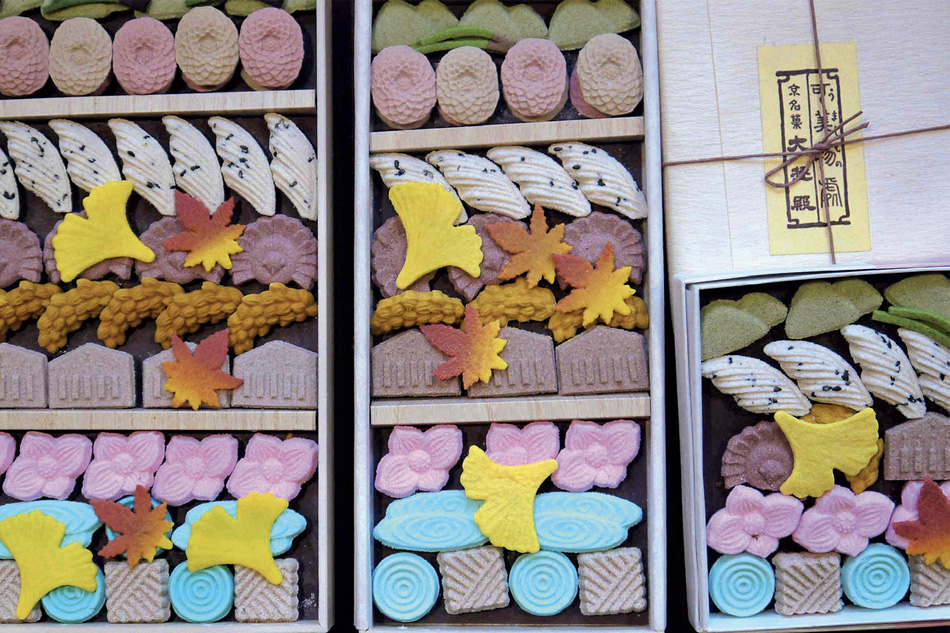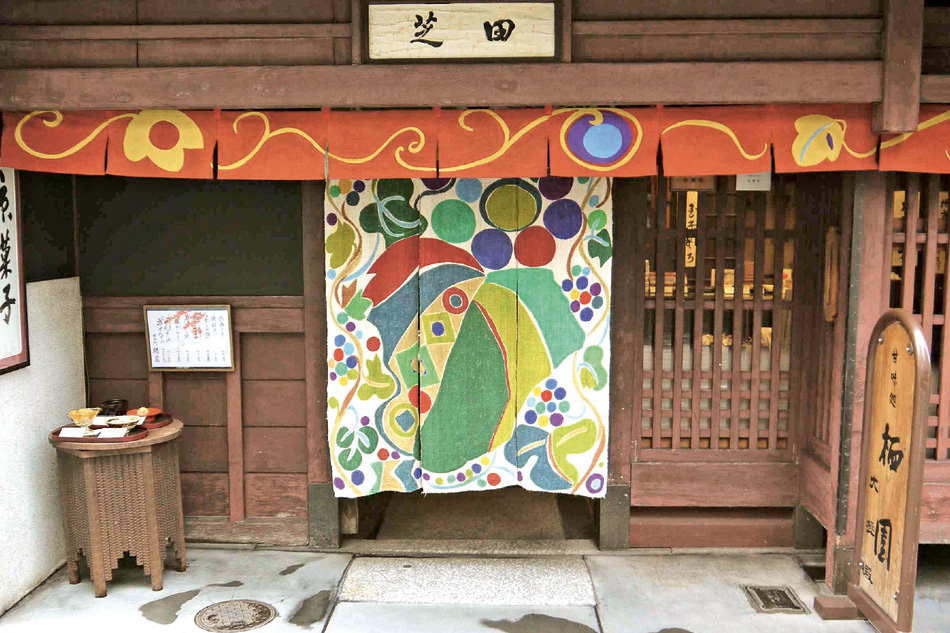These 5 Kyoto food haunts are known to still serve authentic imperial cuisine | ABS-CBN
ADVERTISEMENT

Welcome, Kapamilya! We use cookies to improve your browsing experience. Continuing to use this site means you agree to our use of cookies. Tell me more!
These 5 Kyoto food haunts are known to still serve authentic imperial cuisine
David Celdran
Published Apr 12, 2019 10:58 AM PHT
|
Updated Apr 12, 2019 11:03 AM PHT
What many consider today as authentic and traditional Japanese cuisine often turns out to be not more than just a century old. Take sushi as an example. Records show that the bite-sized fish and rice dish can be traced to a similar delicacy found in Meiji-period Edo (the former name of Tokyo) in the late 1800s. Wagyu beef, another dish we closely associate with Japan, is an even more recent phenomenon in the country’s history, one that was popularized by Americans and Europeans who introduced beef to the largely fish and vegetable diet of the Japanese. The noodle soup ramen? Well, it’s an early twentieth century invention. And, likewise with tonkatsu. The breaded pork cutlet dish that began its life in Tokyo goes back to only a little over a hundred years.
What many consider today as authentic and traditional Japanese cuisine often turns out to be not more than just a century old. Take sushi as an example. Records show that the bite-sized fish and rice dish can be traced to a similar delicacy found in Meiji-period Edo (the former name of Tokyo) in the late 1800s. Wagyu beef, another dish we closely associate with Japan, is an even more recent phenomenon in the country’s history, one that was popularized by Americans and Europeans who introduced beef to the largely fish and vegetable diet of the Japanese. The noodle soup ramen? Well, it’s an early twentieth century invention. And, likewise with tonkatsu. The breaded pork cutlet dish that began its life in Tokyo goes back to only a little over a hundred years.
For a genuine taste of traditional Japanese cuisine, one needs to look farther south to Kyoto. There are two reasons the city is home to one of the oldest and best-preserved culinary traditions in the country. As the residence of the Imperial Family for most of the last millennium, Kyoto attracted the most talented cooks and artisans to the city and left their imprint on the local culinary scene, as best exemplified in the elaborate multi-course kaiseki meal, remains evident today.
For a genuine taste of traditional Japanese cuisine, one needs to look farther south to Kyoto. There are two reasons the city is home to one of the oldest and best-preserved culinary traditions in the country. As the residence of the Imperial Family for most of the last millennium, Kyoto attracted the most talented cooks and artisans to the city and left their imprint on the local culinary scene, as best exemplified in the elaborate multi-course kaiseki meal, remains evident today.
You may also like:
You may also like:
The city of more than 2,000 temples and shrines was and still is the spiritual center of Japan and the large population of priests and monks were instrumental in developing Kyoto’s austere and vegetable-based temple cuisine called shojin-ryori. To this day, vegetables, and tofu or soybean paste in particular, play a significant role in the local diet and continue to define everything from street food to haute cuisine.
The city of more than 2,000 temples and shrines was and still is the spiritual center of Japan and the large population of priests and monks were instrumental in developing Kyoto’s austere and vegetable-based temple cuisine called shojin-ryori. To this day, vegetables, and tofu or soybean paste in particular, play a significant role in the local diet and continue to define everything from street food to haute cuisine.
A third factor that has influenced Kyoto’s largely vegetarian diet is geography. With no access to the sea, locals were forced to rely heavily on farming root crops and vegetables to feed the population.
A third factor that has influenced Kyoto’s largely vegetarian diet is geography. With no access to the sea, locals were forced to rely heavily on farming root crops and vegetables to feed the population.
ADVERTISEMENT
But being the modern cosmopolitan city that it is today, Kyoto has been unable to fend off the influence of Western fast food chains and Tokyo-style eateries and convenience stores, all of which have introduced a significant amount of animal fat in the local diet. But all is not lost as this short list of Kyoto institutions illustrates. Indeed, amid the Pachinko parlors, Family Marts, and McDonald’s outlets are some of the oldest and finest examples of kyo-ryori and the last vestiges of imperial cuisine. Don’t leave Kyoto without seeking out these five venerable establishments and the rare treats exclusive to this part of Japan.
But being the modern cosmopolitan city that it is today, Kyoto has been unable to fend off the influence of Western fast food chains and Tokyo-style eateries and convenience stores, all of which have introduced a significant amount of animal fat in the local diet. But all is not lost as this short list of Kyoto institutions illustrates. Indeed, amid the Pachinko parlors, Family Marts, and McDonald’s outlets are some of the oldest and finest examples of kyo-ryori and the last vestiges of imperial cuisine. Don’t leave Kyoto without seeking out these five venerable establishments and the rare treats exclusive to this part of Japan.
Yaosada
Yaosada
361 Shijocho, Shinmachi Ayanokoji-dori Agaru, Simogyo-ku, Kyoto
You won’t find this century-old restaurant on any foreign guidebook, but the family-run establishment of Sadatoshi Sasaki, a third-generation restaurateur, is popular among local connoisseurs looking for an affordable expression of Kyoto’s unique shojin-ryori. It adopts a farm-to-table approach and Sasaki-san sources his ingredients exclusively from within the vicinity of Kyoto. The specialty at Yaosada is bento box lunches, typically a combination of sticky rice, tofu, soup, white beans, and whatever vegetables are in season. To cater to a wider client base, river fish or shrimps are included in the menu, but never any meat. Apart from the exquisite food, another reason to visit is the rare chance to dine in an authentic machiya or traditional wooden shop house.
You won’t find this century-old restaurant on any foreign guidebook, but the family-run establishment of Sadatoshi Sasaki, a third-generation restaurateur, is popular among local connoisseurs looking for an affordable expression of Kyoto’s unique shojin-ryori. It adopts a farm-to-table approach and Sasaki-san sources his ingredients exclusively from within the vicinity of Kyoto. The specialty at Yaosada is bento box lunches, typically a combination of sticky rice, tofu, soup, white beans, and whatever vegetables are in season. To cater to a wider client base, river fish or shrimps are included in the menu, but never any meat. Apart from the exquisite food, another reason to visit is the rare chance to dine in an authentic machiya or traditional wooden shop house.
Chinsenro
Chinsenro
26 Miyama-cho, Nantan, Kyoto Prefecture
The traditional ryokan or country inn in the foothills of Miyama, Kyoto has been hosting travelers for over 110 years. “Chinsenro” stands for pillow river ryokan, a name taken after the sound of the river guests hear under their pillows at night. Like most ryokan, Chinsenro is operated and owned by a local family. The ryokan run by the Naganos is typical of country inns in Japan: a large wooden house with multiple open-plan rooms and large screens that open to views of nature. Apart from offering the all-important onsen or hot spring bath, ryokan specializes in one other service: home-cooked kaiseki meals.
The traditional ryokan or country inn in the foothills of Miyama, Kyoto has been hosting travelers for over 110 years. “Chinsenro” stands for pillow river ryokan, a name taken after the sound of the river guests hear under their pillows at night. Like most ryokan, Chinsenro is operated and owned by a local family. The ryokan run by the Naganos is typical of country inns in Japan: a large wooden house with multiple open-plan rooms and large screens that open to views of nature. Apart from offering the all-important onsen or hot spring bath, ryokan specializes in one other service: home-cooked kaiseki meals.
The dinner kaiseki at Chinsenro is an elaborate ritual of 15 dishes served in succession. The head of the family Nagano-san, a former cook from Osaka, and his daughter, a French-trained pastry chef, prepare all the dishes in their kitchen and source all fresh, seasonal ingredients from the surrounding countryside, including their own garden. Plating a kaiseki meal is an art form. The design and presentation of each dish is made to reflect the seasons and shapes of nature. Special attention is also put on the quality of the tableware, often changed to adapt to the colors of the season.
The dinner kaiseki at Chinsenro is an elaborate ritual of 15 dishes served in succession. The head of the family Nagano-san, a former cook from Osaka, and his daughter, a French-trained pastry chef, prepare all the dishes in their kitchen and source all fresh, seasonal ingredients from the surrounding countryside, including their own garden. Plating a kaiseki meal is an art form. The design and presentation of each dish is made to reflect the seasons and shapes of nature. Special attention is also put on the quality of the tableware, often changed to adapt to the colors of the season.
Nishiki Market
Nishiki Market
Nishiki Koji-dori, Nakagyo-ku, Kyoto
To get an idea of how central vegetables are to kyo-ryori, head to Nishiki Market in downtown Kyoto where a mind-blowing array of fresh produce is on display—most of which are harvested from within Kyoto Prefecture itself. Because fresh seafood was too difficult to source and eating meat and fish were frowned upon by Buddhist culture, landlocked Kyoto turned to a largely vegetarian diet instead. One establishment you shouldn’t miss is Kawamasa, a dealer that has been selling locally sourced vegetables since 1923. The oversized produce is highly valued by the city’s top chefs and restaurateurs for their nuanced flavor and delicate mouth feel.
To get an idea of how central vegetables are to kyo-ryori, head to Nishiki Market in downtown Kyoto where a mind-blowing array of fresh produce is on display—most of which are harvested from within Kyoto Prefecture itself. Because fresh seafood was too difficult to source and eating meat and fish were frowned upon by Buddhist culture, landlocked Kyoto turned to a largely vegetarian diet instead. One establishment you shouldn’t miss is Kawamasa, a dealer that has been selling locally sourced vegetables since 1923. The oversized produce is highly valued by the city’s top chefs and restaurateurs for their nuanced flavor and delicate mouth feel.
ADVERTISEMENT
According to Nogawa-san, the owner and fourth generation vegetable dealer, the crops were naturally modified to adapt to the extremes of Kyoto’s climate, where hot days and cold nights make it difficult to grow the regular variety. At the market you can sample other Kyoto specialties like pickled vegetables, prized for their natural sweetness, and tofu. The delicate ingredient made of curdled soymilk is the basic staple of shojin-ryori or temple cuisine. Tofu is so popular in Kyoto that an entire cuisine was developed around it. Entire stalls at the market are dedicated only to tofu of all types and sellers will willingly offer shoppers a taste of the freshly made delicacy.
According to Nogawa-san, the owner and fourth generation vegetable dealer, the crops were naturally modified to adapt to the extremes of Kyoto’s climate, where hot days and cold nights make it difficult to grow the regular variety. At the market you can sample other Kyoto specialties like pickled vegetables, prized for their natural sweetness, and tofu. The delicate ingredient made of curdled soymilk is the basic staple of shojin-ryori or temple cuisine. Tofu is so popular in Kyoto that an entire cuisine was developed around it. Entire stalls at the market are dedicated only to tofu of all types and sellers will willingly offer shoppers a taste of the freshly made delicacy.
Joukeian
Joukeian
Sannaicho 1-24 Sennyuji, Higashiyama-ku, Kyoto
Ritual tea drinking known as chanoyu or the “way of tea” was adopted by Zen Buddhism in sixteenth century Kyoto and was transformed by the seventeenth century tea master Sen no Rikyu into the spiritual and meditative ceremony that it is today. Although traditional tea service is offered in many of Kyoto’s inns and restaurants, only a licensed teahouse under the helm of an accredited tea master can claim to provide the authentic version—and charge accordingly.
Ritual tea drinking known as chanoyu or the “way of tea” was adopted by Zen Buddhism in sixteenth century Kyoto and was transformed by the seventeenth century tea master Sen no Rikyu into the spiritual and meditative ceremony that it is today. Although traditional tea service is offered in many of Kyoto’s inns and restaurants, only a licensed teahouse under the helm of an accredited tea master can claim to provide the authentic version—and charge accordingly.
The ceremony is a highly ritualized drama of precise steps and movements symbolizing the participant’s entry into the pure world represented by the teahouse. Few words are spoken and the highlight of the ceremony is the ritual sipping of the macha or special green tea, usually accompanied by wagashi. The Joukeian teahouse in the scenic eastern hills of Higashiyama is an ideal place for novices and foreigners to experience a traditional tea ceremony as the lady tea master Soko Matsumoto patiently walks clients through the often strange and intricate hours-long process. The austere architecture of the teahouse and the beautiful tea garden are in themselves major attractions and are part of a dying breed of establishments in modern Kyoto.
The ceremony is a highly ritualized drama of precise steps and movements symbolizing the participant’s entry into the pure world represented by the teahouse. Few words are spoken and the highlight of the ceremony is the ritual sipping of the macha or special green tea, usually accompanied by wagashi. The Joukeian teahouse in the scenic eastern hills of Higashiyama is an ideal place for novices and foreigners to experience a traditional tea ceremony as the lady tea master Soko Matsumoto patiently walks clients through the often strange and intricate hours-long process. The austere architecture of the teahouse and the beautiful tea garden are in themselves major attractions and are part of a dying breed of establishments in modern Kyoto.
Daigokuden
Daigokuden
590 Obiyacho, Takakura Shijo-dori Agaru, Nakagyo-ku, Kyoto
Efforts to save the machiya of Kyoto are more than just about preserving a distinct architectural style. They also help conserve a traditional way of life and of doing business. The confectionary Daigokuden, close to Nishiki Market, has been selling traditional Japanese delicacies to Kyoto’s elite from the same shop house for more than 120 years. The delicate and expensive sweets called wagashi are made from recipes and designs handed down through generations of artisanal families that once served the imperial household and local aristocracy.
Efforts to save the machiya of Kyoto are more than just about preserving a distinct architectural style. They also help conserve a traditional way of life and of doing business. The confectionary Daigokuden, close to Nishiki Market, has been selling traditional Japanese delicacies to Kyoto’s elite from the same shop house for more than 120 years. The delicate and expensive sweets called wagashi are made from recipes and designs handed down through generations of artisanal families that once served the imperial household and local aristocracy.
All confections are handcrafted and made with local ingredients like beans, rice, and flour. The colors and designs reflect the current season of the year. Biting into one, you soon realize that traditional wagashi is little more than fancily decorated and elaborately shaped sweet powder. But, as the shop owner Shibata-san quickly points out, wagashi is valued more for its beauty than for its flavor. “Japanese sweets are not just to eat, they are to enjoy watching or looking at their shape and color.”
All confections are handcrafted and made with local ingredients like beans, rice, and flour. The colors and designs reflect the current season of the year. Biting into one, you soon realize that traditional wagashi is little more than fancily decorated and elaborately shaped sweet powder. But, as the shop owner Shibata-san quickly points out, wagashi is valued more for its beauty than for its flavor. “Japanese sweets are not just to eat, they are to enjoy watching or looking at their shape and color.”
Photographs by David Celdran
This story originally appeared on Vault Magazine Issue 13 No 1 2014.
ADVERTISEMENT
ADVERTISEMENT





